Most of the cotton fabrics are printed with reactive dyes. It is important to improve the success rate of cotton reactive printing and control the color difference within a reasonable range to improve the production efficiency, energy saving and reduce the production cost significantly. In this paper, according to the production practice, we summarize and analyze the factors that easily cause color difference in the production process, and put forward the corresponding control measures.
Pre-treatment
The pre-treatment is uniform and consistent in order to provide a guarantee for the control of color difference. If the pre-treatment can not meet the requirements, the subsequent processing is difficult to achieve the desired effect. Therefore, to control the color difference, we must start from the pre-processing.
1 Turning cloth sewing head
The same cloth car requires the same specification, the same manufacturer, the same batch of blank cloth sewn together. If the list is too small and different batches of cloth need to be carpooled, they must be marked well so that they can be distinguished in the later process.
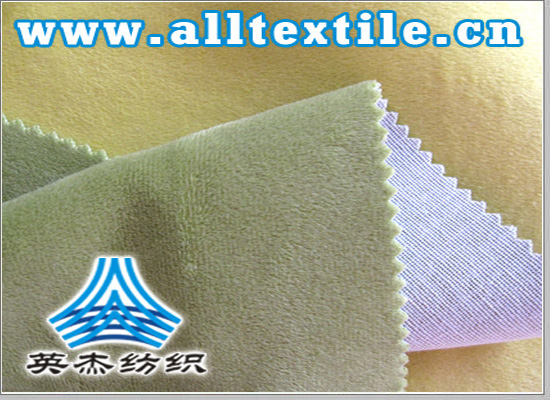
2 Burning wool
The blank fabric pulp generally contains a lot of chemical pulp, if the car speed is fast and slow, or the fire opening is not uniform, the fabric surface is not flat when the fabric passes through the fire opening, which will lead to uneven desizing and cause color difference. Therefore, the burning speed should be consistent, the fabric surface is flat, the fire mouth evenly.
3 practice bleaching
When boiling, the amount of caustic soda and auxiliaries should be strictly controlled, and the process conditions such as steam time, temperature, roll residual rate and water washing should be stable. After boiling, peroxide bleaching should be fully washed to prevent the residue of peroxide. Drying drop cloth width consistent, containing the same moisture.
4 Mercerization
Strictly control the speed and caustic soda concentration, and test the gross efficiency and barium value after the cloth is dropped. Mercerization into the cloth moisture content difference can not be too large, especially some heavy fabrics. Because the cloth contains uneven moisture, will lead to inconsistent mercerization effect, so that the printing effect difference. Cotton fiber fully mercerized, the affinity of the dye to the fiber increased, adsorption is not easy to migrate with the moisture, and in the process of steam and fiber covalent bonding, so that the fabric surface color deep and full of uniform.
5 Brushing
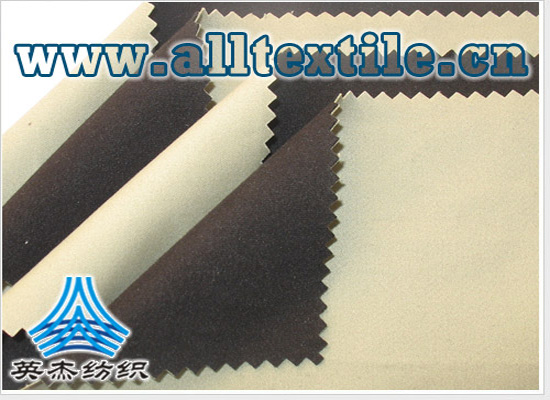
Abrasive cloth grinding effect should be uniform and consistent. Sanding is not recommended to be too coarse, preferably above 280 mesh. During the grinding process, the tension and speed should be even and consistent, and the sanding skin should be changed frequently. Because the grinding time is too long, the roughness of the sanding surface decreases and the grinding effect decreases. Uneven grinding hair will also lead to inconsistent printing color, resulting in color difference.
Printing prescriptions and process conditions
1 color paste prescription
Dyes
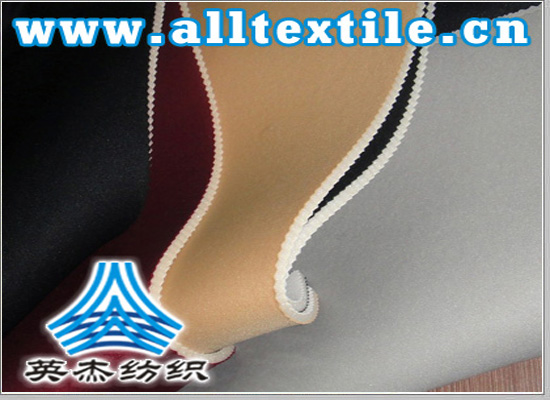
The reactivity of the dyes selected for printing should be moderate and similar. Reactivity is too strong, the stability of the color paste is not good, especially in the summer, with the extension of storage time, the dye color paste to get a significant decline; reactivity is too weak, the steam process can not fully react to the dye, with the process conditions fluctuations will produce obvious color differences. When color matching, the reactivity of dyestuffs in the same prescription should be as close as possible, so that there will not be obvious color changes due to fluctuations in process conditions.
Avoid using pH-sensitive dyes for color matching. For example, C.I. reactive black 8 (domestic reactive black K-BR, Texta reactive black PX-N black) and P-SG black, whose color light is very sensitive to pH value, reddish under acidic conditions and greenish under neutral and weak alkaline conditions. When these dyes are used, it is easy to produce significant color differences due to small fluctuations in the pH value of the fabric.
Some dyes are more sensitive to the humidity during vaporization, such as KN-B black. When the relative humidity is 30%~100%, its color yield gradually decreases as the humidity increases. Some other types of dyes such as P-SG black have very little change in color yield at 80%~96% relative humidity in Fantian.
Use non-contrasting dyes for color blocking, such as Huntsman's NC-type reactive dye combinations.
The selected dyestuff fastness should be good, especially the washing fastness should be good, otherwise after printing with the fluctuation of washing conditions, the residual degree of floating color on the fabric surface is not consistent, the same cause color difference.
Sodium alginate
If the sodium alginate slurry contains Ca2+, it can combine with the dial group in the sodium alginate molecule to reduce its electronegativity, weaken the electrostatic repulsion between the sodium alginate and the dye molecule, leading to the reaction between the carboxyl group in the sodium alginate molecule and the dye, reducing the amount of reactive dyestuff on the cotton fabric, and causing color difference due to the instability of color giving. If it contains starch slurry, the hydroxyl group of starch can also react with reactive dyes and reduce the color yield. Therefore, in order to obtain a high and stable color fixation rate, high quality sodium alginate should be used.
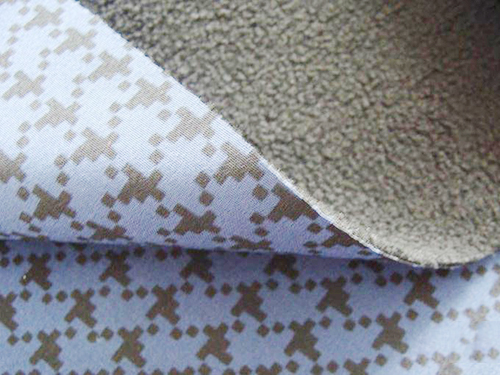
Forming agent
The alkali agent provides the best pH value for the reaction between the reactive dyestuff and the fiber during the steam process, and the commonly used alkali agents are baking soda and soda ash. Printing should be based on the reactivity of the dyestuff, and the reasonable choice of alkali agent type and its dosage. If the alkali is too strong, some reactive dyestuffs will have poor storage stability and will hydrolyze prematurely; if the alkali is not enough, some poorly reactive dyestuffs will not be fully fixed on the fiber, which will also cause waste of dyestuff and produce color difference.
Anti-dye salt S
Anti-dyeing salt S is a weak oxidizing agent that can prevent the dyestuff from being damaged by reducing substances during the drying and steaming process. The dosage of anti-dyeing salt should be reasonable. If the dosage is too small, it will not be able to prevent the reductive substances from damaging the dyestuff, resulting in color difference; if the dosage is too large, some dyestuffs that are not resistant to oxidation will also produce color change, such as anthraquinone-type reactive brilliant blue dyestuff, the color light will be dark and not vivid.
Urea
Urea plays the role of moisture absorption and solubility in the printing process. However, at high temperatures, it reacts with vinylsulfone reactive group and consumes part of the alkali agent. For some dyes containing vinylsulfone reactive group, the amount of urea should be as low as possible; for the solubility of dyes without vinylsulfone reactive group, the amount should be increased appropriately. The amount of urea is too high or too low, it will make the color of printing unstable, resulting in color difference.
Sodium Hexametaphosphate
The main function of sodium hexametaphosphate is to complex the calcium and magnesium ions in the color paste. The water hardness of the printing and dyeing plant is large, or the calcium ion content in sodium alginate is high, sodium hexametaphosphate can be added to avoid the combination of calcium and magnesium ions with sodium alginate and reduce the amount of color, resulting in color difference.
2 printing process conditions
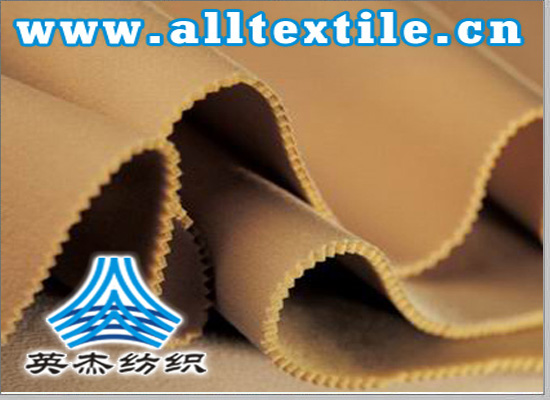
Steam
(1) drying
Drying before steam after printing should be uniform, if the fabric surface contains different moisture, it will certainly cause differences in temperature and humidity of the fabric surface when steam, resulting in color differences.
( 2) Steaming time
Steaming time depends on the performance of dyestuff. Different dyestuffs have different reactivity and require different steaming time. For dyestuff with strong reactivity, such as dyestuff containing vinylsulfone reactive group, the steam time is too long, but it will cause the decrease of color yield and color phase change; likewise, the steam time for dyestuff with weak reactivity is not enough, and the reaction between dyestuff and fiber is not sufficient, which will also cause color difference.
Take the reactive red 271 containing vinyl sulfone reactive group as an example, its color phase and depth are different under different steaming time, see Figure 1.
As can be seen from Figure 1, with the extension of vaporization time, the color depth of reactive red 271 decreases, the red light decreases, and the blue light increases. Therefore, the printing time of reactive dyes containing vinylsulfone is generally controlled at 5 min; the printing steaming time of monochlorine homotriazine reactive dyes is controlled at 8~10 min, and the color depth and color phase are more stable.
( 3) Steaming temperature
Steaming temperature is generally controlled at 101~103℃, which should not fluctuate too much.
(4)Vaporization humidity
For most dyestuffs, the relative humidity is controlled at 90%~95% to obtain stable and high color yield.
Individual reactive dyestuff, such as reactive black KN-B, is affected by the steam humidity, the relative humidity is 30% ~ 110%, with the steam humidity increases, the amount of dyestuff color gain gradually reduced. Therefore, reactive printing coloring should try to avoid the use of this dye. If it must be used, the humidity should be strictly controlled within a reasonable range when steaming to avoid color difference.
Washing
After steaming, the fabric should be washed to remove the unconsolidated dye.
(1) Fully remove the floating color
Some dyes such as reactive emerald blue fastness is not good, the fixation rate is low, the water washing is not sufficient, it will lead to floating color residue, both affect the color fastness of the finished product, but also lead to color difference.
(2) Remove the color staining when washing
The dark color on the light color staining degree is different, the same will produce color difference. The same pattern, flower color has a deep and shallow, dark color washing dye off more, if its affinity for the phase fiber is larger, but also re-staining cotton fabrics, staining the white background or light color, especially for some sensitive colors, discoloration is very obvious. In order to avoid the color difference caused by washing, washing to add anti-staining agent, while washing tank to change water in a timely manner.
Finishing
After printing and washing, the reaction between dyestuff and fiber is basically completed, however, the color difference will still be produced when finishing. Therefore, it is necessary to analyze some common color changes caused by finishing in order to effectively control color differences.
1Acid
When finishing the finished product, the pH value of the cloth should be adjusted to weak acid to neutral, commonly used are citric acid, formic acid and acetic acid. The addition of acidic substances will have a certain effect on the dye, and improper control will also cause color difference.
Citric acid is a ternary carboxylic acid, and also has chelating effect, which is more obvious to change the color and light of some reactive dyes containing metal ions. At the same time, citric acid also has a reducing effect under light conditions, which can also have a destructive effect on the chromophore of dyes.
Formic acid contains aldehyde groups, which are reductive, and under certain conditions, can also damage the chromophores of dyestuffs, leading to chromatic aberrations.
Compared with citric acid and formic acid, acetic acid does not have a significant effect on the color light. It is recommended to adjust the pH value of the cloth with acetic acid. In the process of use, it is necessary to pay attention to the volatility of acetic acid and the odor of the cloth.
2 Color change caused by color fixing agent
Commonly used color fixing agent more or less will cause the color change of the printed fabric, especially the solid
Contact: Jeanne yang(MISS)
Phone: 13912652341
E-mail: [email protected]
Add: Room A2216/A2217,Double-Star Building,No 567 New South Middle Road, KunShan City JiangSu Province ,China.